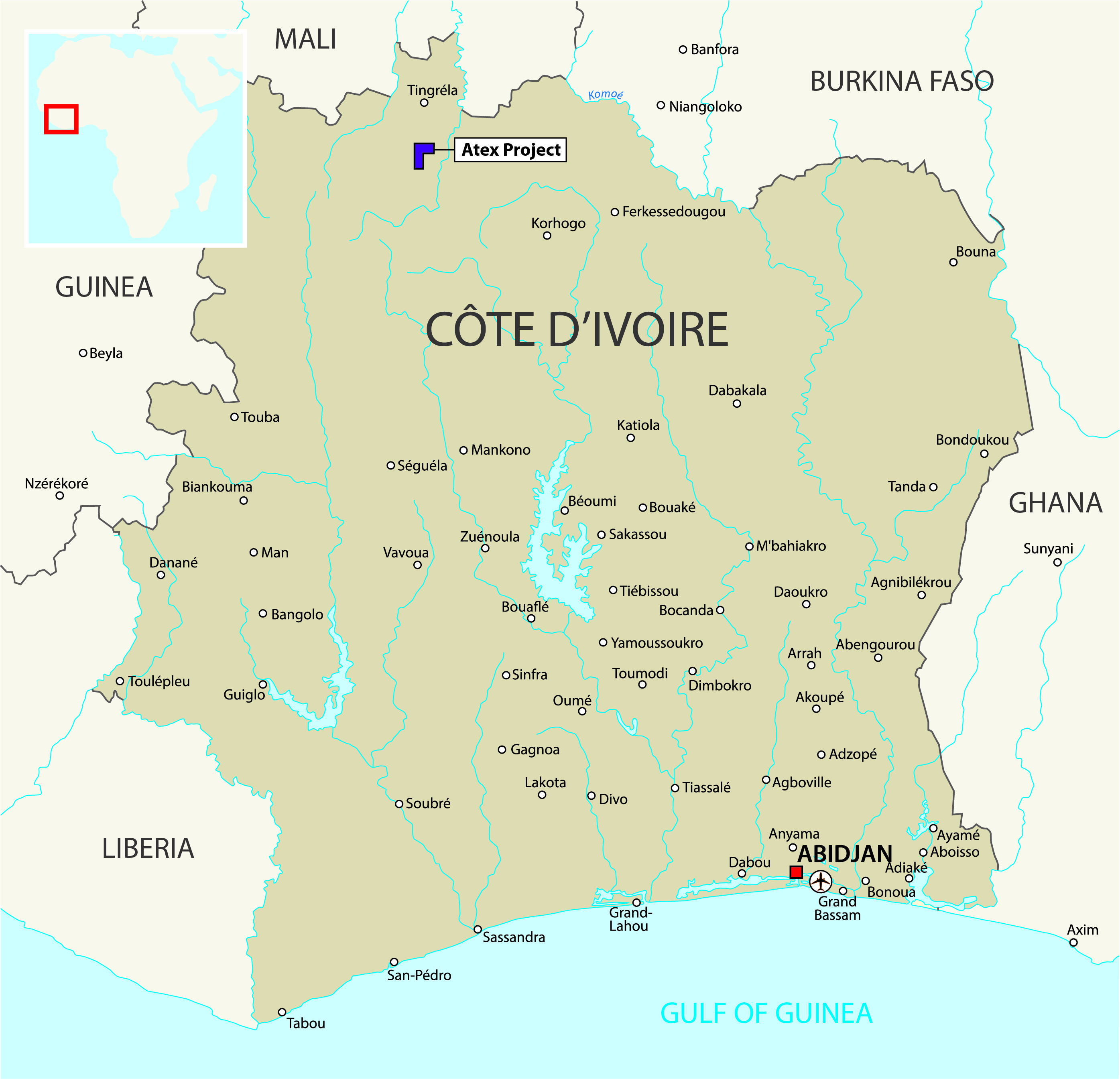Firering currently owns a 90% interest in Atex Mining Resources, which holds the Atex Project.
Geological Context
Atex is located in the western limit of the Bagoé Basin within the Baoulé-Mossi domain of the West African Cration. The Baoulé-Mossi domain is host to multiple gold, base metal, and Birimian-age pegmatite-hosted columbo-tantalite and lithium deposits. These pegmatites occur in Côte d'Ivoire, southwestern Mali, Ghana, south-western Niger, and Burkina Faso.
The project area is underlain by a series of metavolcanic and metasedimentary rocks of the Birimian Supergroup that strike in a north-northeast direction along the length of the permit and are surrounded by Eburnean-aged granitoids, including undeformed K-feldspar porphyritic monzogranites, which are temporally associated with the pegmatites in the region.
Location
Atex is strategically located 40km north of the town of Boundiali and approximately 100km northwest of the city of Korhogo, which is easily accessible by road, rail, and air. This infrastructure is key to ensuring efficient transportation of materials and provides direct links to regional export hubs. Established nickel and manganese operators already transport ore and concentrate through the nearby ports of San Pedro and Abidjan, highlighting the region’s operational readiness and the Atex project’s favourable location for logistics and export.
Côte d'Ivoire is considered a safe and stable mining jurisdiction, and the Ivorian government has shown strong support for the mining sector, creating a welcoming environment for foreign investment. The country has modern mining laws, a well-established regulatory framework, and various incentives for mining companies. It is also working to diversify its economy, and mining is a key sector in that effort.
Exploration & Drilling Campaign
In March 2024, Atex completed its first reverse circulation (RC) drilling campaign, drilling a total of 3,753 metres over 23 holes. The results were significant, with lithium mineralisation expanded by 122%, stretching the strike length to 800 metres. The drilling campaign also revealed notable intercepts, including 15 metres at 0.74% Li2O from 118 metres depth, and 6 metres at 1.59% Li2O from 118 metres depth.
These results confirm the significant potential of the project area for further lithium discoveries, with the extension of the strike length providing a solid foundation for continued exploration and development. Accordingly, discussions are ongoing with potential partners to fund the next stages of exploration with the objective to publish a maiden Mineral Resource Estimate.

